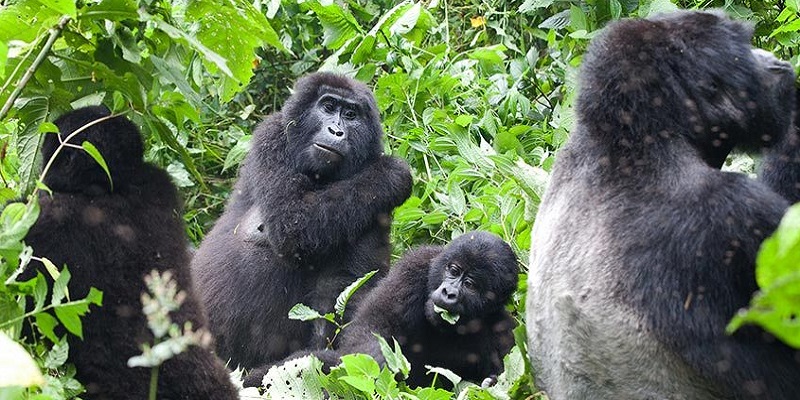Tarangire National Park
Tarangire National Park is less known than Serengeti and Ngorongoro, but is absolutely worth a visit for a great safari experience! The park is characterised by its many baobab trees and herds of elephants can be seen in the dry season between July and November in large numbers at the Tarangire River.
Named after the life-giving river that flows its length, the 2,642-sq.-km (1,030-sq.-mile) Tarangire National Park is Tanzania’s fifth-largest park — though if you include the unfenced game-controlled areas that border it, the larger ecosystem is closer to 35,000 sq. km (13,650 sq. miles) — enough to host some migratory movement of herds. Sometimes referred to as a “mini Serengeti,” Tarangire also shares some topographical similarities with its big brother, the most arresting being the short-grass plains you find mostly in the north, their expanses are broken only by the shapely “umbrella” acacia tree — a picture-perfect backdrop for game viewing. A striking contrast to these golden plains, and not found in the Serengeti, is Tarangire’s lush green swamps — Gursi, Larmakua, Nguselorobi, and Silale — where elephants stand thigh-high in juicy grasses that act as a magnet for herds of buffalo, wildebeest, and zebra, with predators usually in close attendance. The farther south you travel, the landscape becomes more densely vegetated and game sightings drop accordingly, though there are areas of open savannah, and the tracks are mercifully free of day-trippers.
Top Things to see & do in Tarangire National Park
- Game Drives
The large size of this national park creates opportunities for a wide variety of game drive routes and lengths.
In a day-long safari, you can get a comprehensive impression of the park and encounter hundreds of elephants. Lunch can be enjoyed at one of the many picnic areas throughout the safari circuit.
Tarangire is a beautiful Safari park, dominated by huge baobab trees that stand above the open grass plains and riverbeds, and varied habitats that play home to 94 mammal species, huge numbers of which concentrate around the permanently flowing waters of the Tarangire, particularly during the dry season. In fact, given its dense concentrations of animals. Tarangire is also an ornithologists’ haven, boasting a greater variety of birds than even Lake Manyara, with upward of 500 species to look out for — many of them, like the kohl-eyed lilac-breasted roller, orange-bellied parrot, and malachite kingfisher, flashing like gems in the undergrowth.
When to visit Tarangire national park?
Best time to Visit Tarangire National Park is from June to October during the dry season when migrant game congregates around the swamps and the Tarangire River valley. Migrating elephants can then be seen in good size herds, with a fine diversity of other large mammals. But the numbers of animals vary due to the timing of the rains. If the long rains last later into the mid-year, migratory animals may not return by June as interior water holes will not dry out, and if the short rains arrive earlier than usual, the game will start to disperse away in October from its lifeline as the Tarangire River will not be the only available water source, and at the same time, forage will start to renew from the surrounding arid lands allowing herbivores plenty to eat from. Stalking predators trail the migrating prey to survive. (See: The Best time to Visit Tarangire National Park.)


